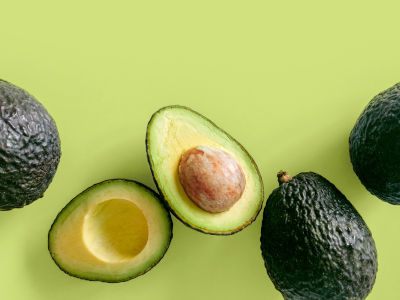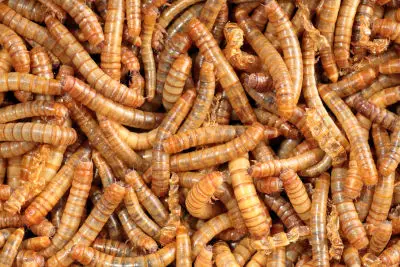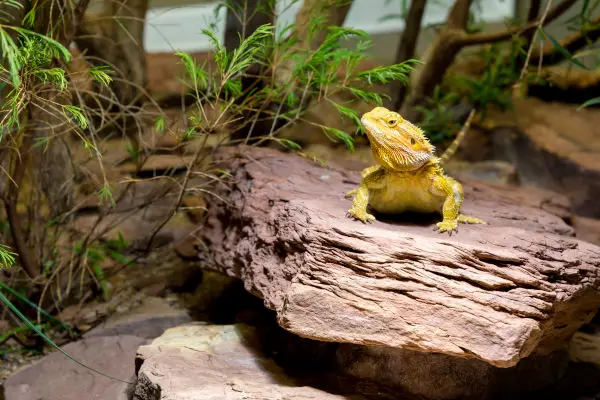What Colour is Bearded Dragon Blood (Is it green?)
If you are interested in Bearded Dragons, you may have been curious about how their body works. In particular their blood and what color it may be.
A Bearded Dragon’s blood is red. Like most non-insects, it is red. However, it is thinner than a human’s blood, but still red. The Bearded Dragon can have many different skin color variations based on his habitat or if selective breeding is used.
| Are these foods dangerous for your Beardie? | |
| Avacado? Click here to learn, from this guide, if this food is dangerous |  |
| Superworms? Click here to learn, from this guide, if this food is dangerous |  |
Now that you know what color their blood is, keep reading to learn if they are cold-blooded, what cold-blooded means, if their blood affects their skin color, and much more.
Are bearded dragons cold-blooded?
Now that you know that a Bearded Dragons blood is red, like us humans. You may be wondering why people refer to them as cold-blooded. Therefore, in this section I will explain what this is and how they deal with it with their behavior.
Bearded Dragons are cold-blooded. In fact, all reptiles are cold-blooded. The term, cold-blooded means that their environment controls their body temperature. This is why it is very important that they position themselves in the correct location for optimal heat.
Us humans are different, we have a central system to maintain our body heat. But, we are still susceptible to the environment. E.g. if it is extremely cold, and we are stuck outside in it for a long time, our internal body temperature will drop.
Does a Bearded Dragons blood affect his skin color?

selection of paint colors
Now that you understand what color their blood is and that they are cold-blooded. You may still be wondering if the Bearded Dragons blood affects his skin color. So, in this section I will clarify this for you.
The skin color of a Bearded Dragon has no link to his blood. His skin color is mainly affected by two things:
- Habitat
- Selective breeding
Habitat & Selective Breeding
The habitat of a Bearded Dragon has an effect on his color. But, selective breeding has a bigger effect. This is when they are breed specifically to generate different color variants.
For example, if a breeder wanted to have an exceptionally yellow bearded dragon. It will be advantageous to find a yellow male and female. Or, if he wanted a mix, he may select two different colors to create a morphed color variation.
Do bearded dragons squirt blood?
When it comes to Beared Dragons blood there are many different rumors that surface. One of them is about them squirting blood. So, in this section I will clarify this rumor and offer an explanation as to where it may have come from.
Bearded Dragons do not squirt blood. However, there are some lizards that do. One of them is the North American dessert Horned Lizard. This lizard is famous for squirting blood from its eye.
It does this as a self-defense mechanism. Its eye swells up then ruptures to cause this amazing display. Pretty clever, right? Not sure about you. But, if I saw a lizard squirting blood from his eye, I would be running for the hills, right?
Why do bearded dragons turn yellow?

yellow bearded dragon on a stone
With all this talk about skin and blood color, there may be some owners that notice their Bearded Dragon’s skin going yellow. Is this normal or a matter of concern? Let me explain…
If your Bearded Dragon’s skin turns yellow this could be a bad sign. One of the biggest concerns is yellow skin disease. This is a fungus that attacks their skin. It not only causes this skin discoloration. It can also cause lesions or ulcers. In some cases his hind legs may start turning pale and yellow.
If you have any concerns it’s worth contacting your vet to check upon him. And, regarding the journey to the vets, in the next section, I will explain how this journey can also affect his skin color.
Is it normal for bearded dragons to change color?
In the last section, I hinted at how a simple journey to the vets can affect his skin color. So, in this section I will explain if these color changes are deemed as normal or not.
In some natural cases your Bearded Dragons skin color can change gradually with age. But, if these changes are sudden or temporary, it can be a sign of a problem.
Negative skin color changes
If your Bearded Dragons skin changes suddenly it could be because of stress (Click here to learn how to get rid of your Beardies stress marks), illness, or even them showing some emotion such as them being worried or anxious.
E.g. If your Bearded Dragon feels threatened he may turn black. You may even notice this when he is puffing up his beard.
Regarding traveling to the vets, that I mentioned earlier. This journey can stress out your beardy and cause his skin color to darken (what about green to brown? click here). Or, even the fact that he is being handled by your vet, and not used to him, could do it.
Related Questions:
In this section I will answer some questions related to Bearded Dragons and their behavior. If you have some other questions you need to be answered feel free to contact me.
Q: Should Bearded Dragons eat nuts?
Bearded Dragons should not eat nuts. This is because they have a high-fat content. And one of the challenges with keeping Bearded Dragons in captivity is fighting obesity. The high-fat content in nuts makes this difficult.
Because they are quite inactive, compared to the wild, as an owner, you need to make sure that they do not overeat. And, eating nuts would make it harder to control and keep them satisfied. This includes variations like peanut butter (Click here to see why).
Q: Are male Bearded Dragons territorial?
Male Bearded Dragons are territorial. They will intimidate and fight other male Bearded Dragons to establish territory or to win over the affections of a female to mate with. They may be seen puffing up their throats to warn off other males or to attract females.
However, they do some signs of being social (Click here to see how Beardes show sociability).
Q: What is a Bearded Dragon Morph?
A Bearded Dragon Morph is a mix of two different Bearded Dragon species. This often results in different color variations. But, it can also include unique head shapes, spikes, etc. They are usually popular because their rarety adds value due to their limited numbers.
An example is the green Bearded Dragon (Click here to see if this is real). There are many morphs and different variations are likely to occur in the future due to the many possible combinations.